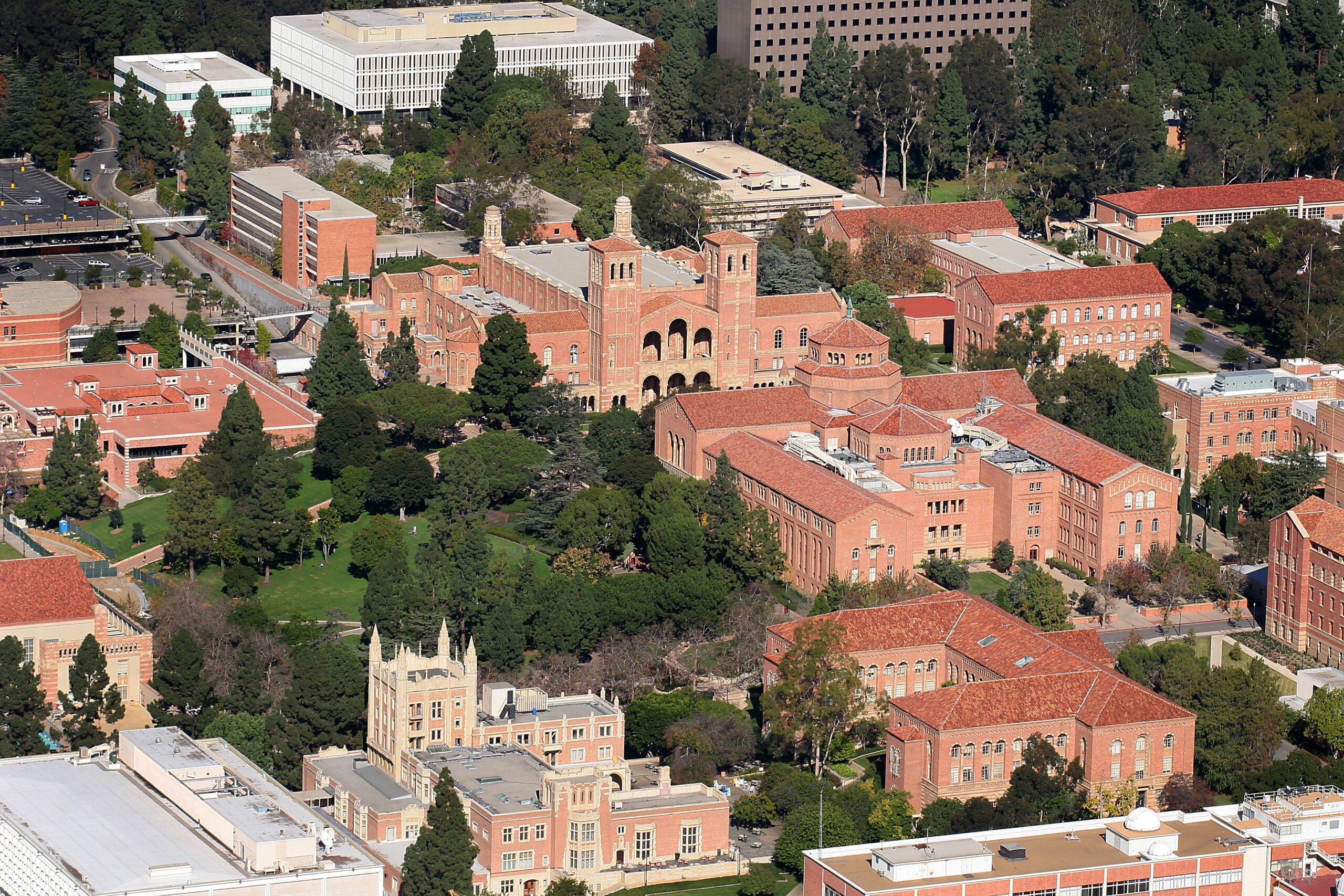UCLA Ed&IS’ History
What began as a Teacher’s College in downtown Los Angeles grew into one of the top public research universities in the nation.
UCLA Ed&IS Roots
The origin of the State Normal School, beginnings of teacher education in Los Angeles and the first days of the School of Library Service
1880
In 1880, Los Angeles was a gaslit pueblo with a population of 11,000. Leaders of the expanding city tried to convince the state to establish a second State Normal School in Southern California, to resemble the original one existing 300 miles to the north in San Jose.
1882
In 1882, the Los Angeles branch of the State Normal School, the usual term for an institution devoted to teacher education, opened its doors for instruction. Students who wanted to be teachers were the first to attend what is now one of the world’s pre-eminent universities.
1899
In March of the following year, the State Assembly approved the school. Over 200 citizens contributed between $2 and $500 and purchased a site less than a mile from the city’s main business section. The school and its children’s school rose from an orange grove, which today is the site of the Central Los Angeles Public Library. On August 29, 1882, the Los Angeles branch of the State Normal School welcomed its first students, all destined to become teachers for the children of Los Angeles.
1914
By 1914, Los Angeles had grown to a city of 350,000 and the Normal School, whose enrollment far exceeded its capacity, moved to a Hollywood ranch off a dirt road that later became Vermont Avenue.
1917
In 1917, Ernest C. Moore, the Harvard transplant and new Normal School Director, proposed that it become the first branch of the Berkeley-based University of California. On May 23, 1919, the Governor signed the necessary legislation. That year the “Southern Branch” offered a two-year program in undergraduate instruction to 1,125 future teachers. In 1922, a four-year Bachelor of Education degree program was added. In 1927, the Southern Branch earned its new name: University of California, Los Angeles, soon to be known as UCLA. In 1929, UCLA moved to Westwood, and in 1939 the Graduate School of Education was founded.
1930
On July 25, 1930, the Los Angeles City Librarian wrote to the University of California President and a local Regent, urging the establishment of a library school at UCLA. Not until December 1958 was the school finally authorized, joining schools then at the University of California, Berkeley in the north and the University of Southern California in the south. On September 18, the day before the initial class of 50 (selected from more than 500 applicants) was to report, the School of Library Service was officially inaugurated. It was housed in what is now the Powell Library and dedicated to serving the needs of UCLA’s undergraduates.
1950
What is today the Corinne A. Seeds University Elementary School (Seeds UES) began in 1882 when the Normal School began. It has been part of UCLA ever since. In the 1930s and 1940s, under the leadership of Principal Corinne A. Seeds, a student of John Dewey, the school emerged as an outstanding example of progressive education. In 1947, Seeds UES moved to its current home on the UCLA campus.
1958
Stressing the word “service” in the School’s name, the new Dean and UCLA Librarian Lawrence Clark Powell characterized librarianship as “an act of giving.” Powell believed that outstanding teaching could be expected only from persons who had been seasoned in library work, and he brought together outstanding professionals as the first faculty. The library and education schools merged in 1994, forming the Graduate School of Education and Information Studies (GSE&IS).
1980
As GSE&IS’s laboratory school, Seeds UES is a source of research and professional education and serves as a model and a resource for public schools. Through workshops on early literacy, primary resources, information literacy, technology integration, and school reform, Seeds UES teachers work closely with Los Angeles area schools to improve instructional practice.

Our Alumni Bruin Timeline
Celebrating and preserving the legacy of our alumni over the decades.
Coming Soon
